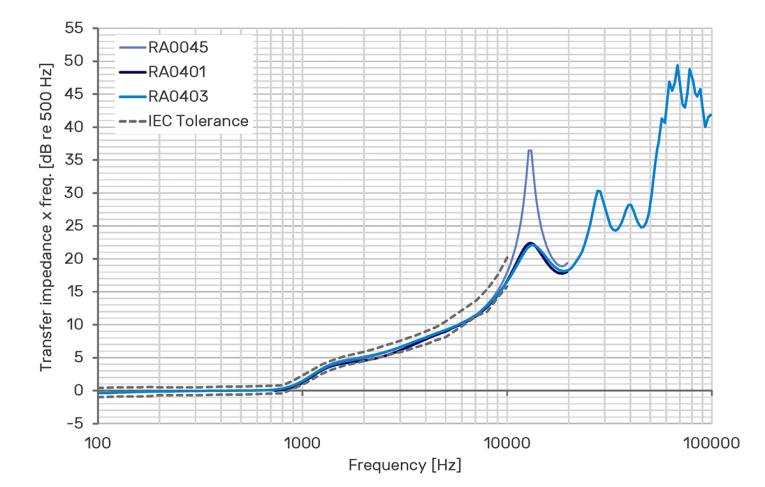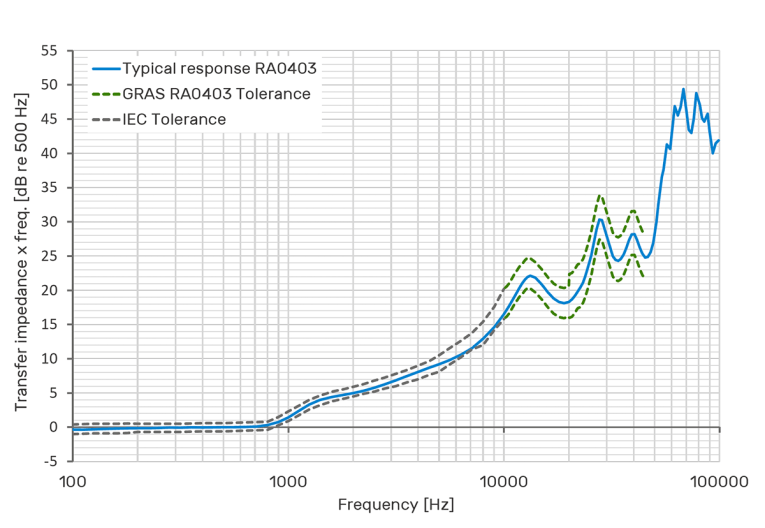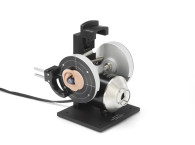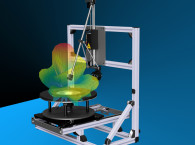
The ever-increasing demand from consumers for new features, better quality and lower prices put a constant strain on audio and electronics manufacturers to differentiate on cost efficiency, shorter time to market and outstanding performance. Testing hi-res audio capable headphones requires solutions that can test up to 40 kHz and beyond. Testing with 1/4" microphones can be used but solutions that present the test object with the acoustical impedance of a real ear below 10 kHz are often preferable. GRAS Sound & Vibration acknowledges those industry challenges and tries to overcome these by pushing the boundaries of what is possible within precision measurement microphones.
For more than three decades, the IEC 60318-4 ear simulator has been the recognized industry standard for testing audio transducers with a realistic simulation of the acoustical load presented by the human ear. However, its undamped resonance at 13.5 kHz makes it difficult to use for high-frequency testing. Therefore, GRAS has introduced two improved variants of the IEC 60318-4 ear simulator. They both retain a firm footing in the standard but improve the ability to measure at high frequencies.
The GRAS RA0401/02 High-Frequency Ear Simulator, launched in 2017 is based on the standard IEC 60318-4 ear simulator, but extends the useful frequency range to 20 kHz. The new GRAS RA0403/04 Hi-Res Ear Simulator is also based on the standard IEC 60318-4 ear simulator, but measures in excess of 50 kHz and meets the increasing demand for realistic and accurate high frequency measurements with simulation of the acoustic load presented by the human ear.
The new RA0403/04 is intended as a research and development tool for hi-res capable headphones. Using a 1/4" microphone and a special damping system to attenuate the internal resonances, the RA0403 offers an unprecedented high frequency capability for headphone testing. These enables audio developers to work with the new audio formats with wider frequency range that have been introduced to provide a better listening experience.

These new high-resolution audio formats have led to the demand for precise and relevant test methods to effectively validate and optimize design and concepts. Modern hi-res audio formats offer frequency ranges above 50 kHz and the internationally standardized ear simulators are not adequate as they were primarily designed for use below 10 kHz.
The new simulator has been modified to improve its high frequency response. It has the same internal design and its acoustic input impedance closely resembles that of the human ear and, as a result, loads a sound source in very much the same way. Below 10 kHz, the standardized ear simulator does a good job at simulating the human ear. However, above 10 kHz its performance starts rapidly to deteriorate. The primary reason for this is its high Q resonance at 13.5 kHz.
This resonance makes the acoustic load that the ear simulator constitutes more complex and imposes an un-linearity on the output above 10 kHz where repeatability is poor and measurements of frequency response and distortion are unreliable.
The RA0403, however, uses a resonance damping system to attenuate the steep resonance at 13.5 kHz. This resonance is attenuated by more than 14 dB. This greatly improves the linearity above 10 kHz and makes it possible to use a 1/4" microphone in the coupler and benefit from its extended frequency range. As a result, the RA0403 is well suited for the research and development of high resolution capable headphones up to 50 kHz.

It is compatible with IEC60318-4 and its acoustic transfer impedance is within the tolerance band specified up to 10 kHz. From 10 to 20 kHz the transfer impedance is within ±2.2 dB, from 20 kHz to 50 kHz it is within ±3.2 dB. Therefore, it is now possible to make measurements up to 50 kHz with good repeatability.
It is measured and calibrated according to IEC60318-4 and delivered with a calibration chart specifying its sensitivity and frequency response. When mounted in a KEMAR in combination with an anthropometric pinna, there is the possibility of performing high frequency tests including the effects from head diffractions.
GRAS' ready-to-use acoustic test fixtures and ear simulator kits for headphone and headset testing cover all requirements in the complete development and production cycle – from early R&D to production line and quality assurance / quality control.
www.gras.dk | www.gras.us






